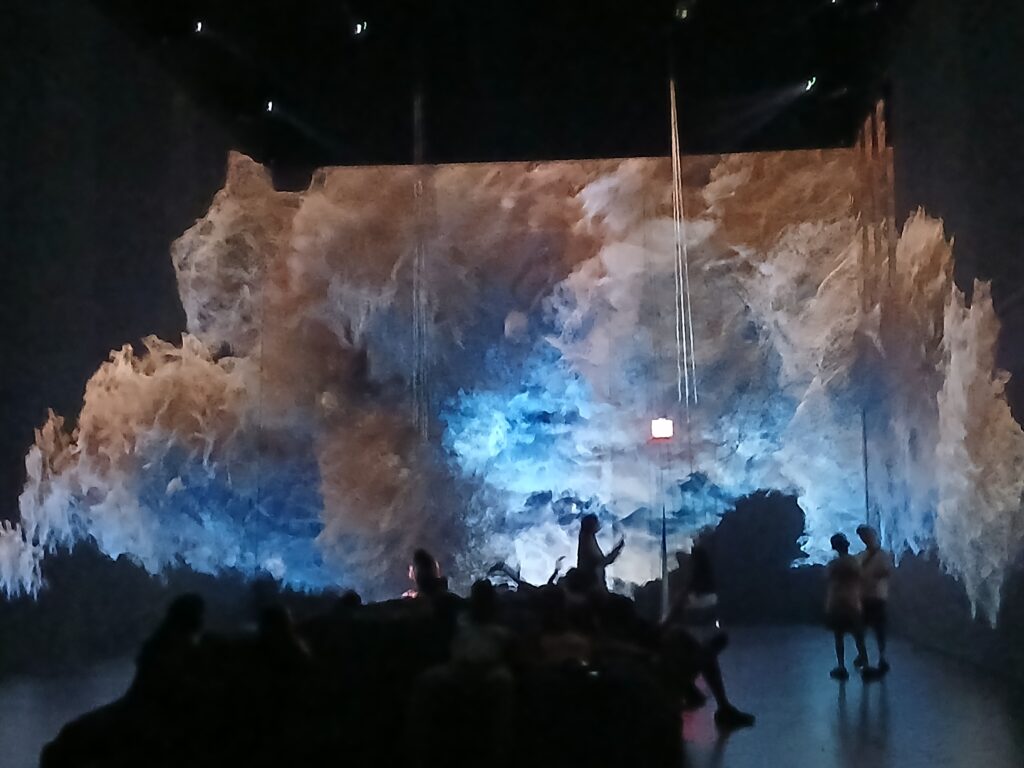If you haven’t heard of Mercer Labs, you’re not alone. Formally Mercer Labs Museum of Art and Technology opened in March, a collaboration between Israeli artist Roy Nachum and real estate developer Michael Cayre. The idea is to be a “place where the traditional hierarchies between art, architecture, design, technology and culture are dissolved,” the New York Times quoted from a news release (I couldn’t find the news release).
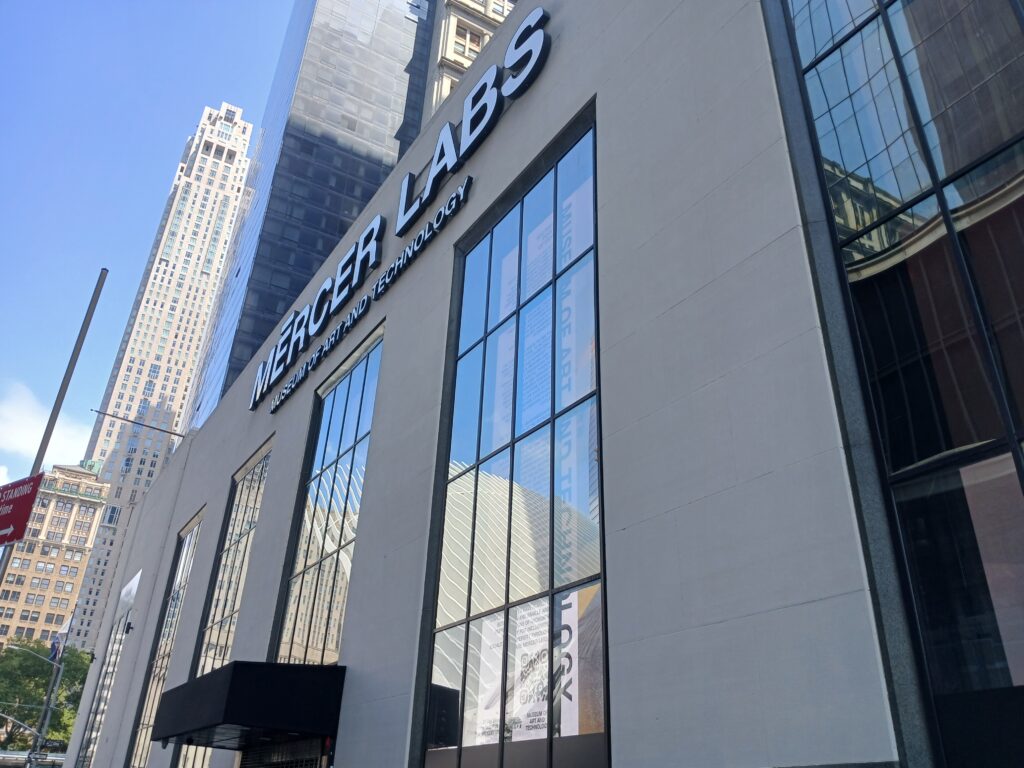
In the Limitless exhibit in this 36,000 square foot space, you’ll visit 15 rooms with multimedia and sensory experiences, climbing up and down stairs between the floors (of course there’s an elevator if needed). In the initial space, which was one of the least interesting, you’ll put on shoe covers and look at a digital moving object that looks like of like a space rock.

There are restrooms right after this if needed – even the mirrors have what you’ll later see as a theme throughout the exhibit: Braille.
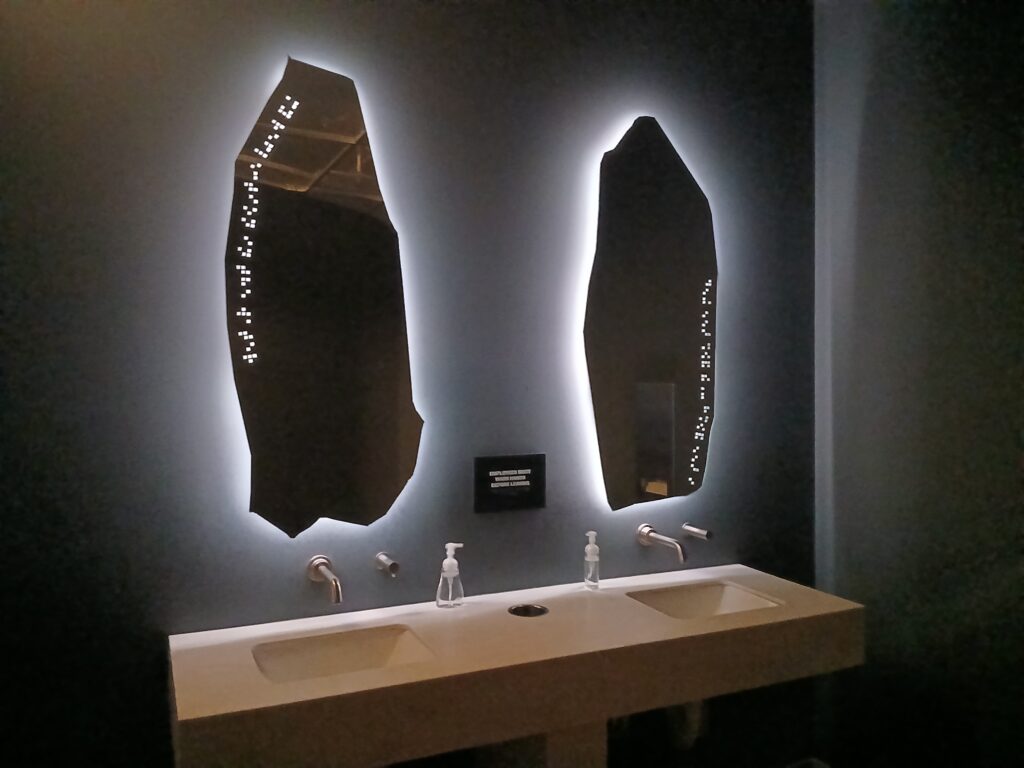
The Map: The next room is one of my favorites – a 5,000 square foot room with imagery moving across the four walls and even the floor. Take a seat on the foam rock in the center, which is meant to feel like one at Central Park (but a lot more comfortable) or on one of the 2 person swings at each corner of the room. The imagery moves from rolling fields and grass to what feels like more space rocks, to a soaring white bird, to other fluid images.
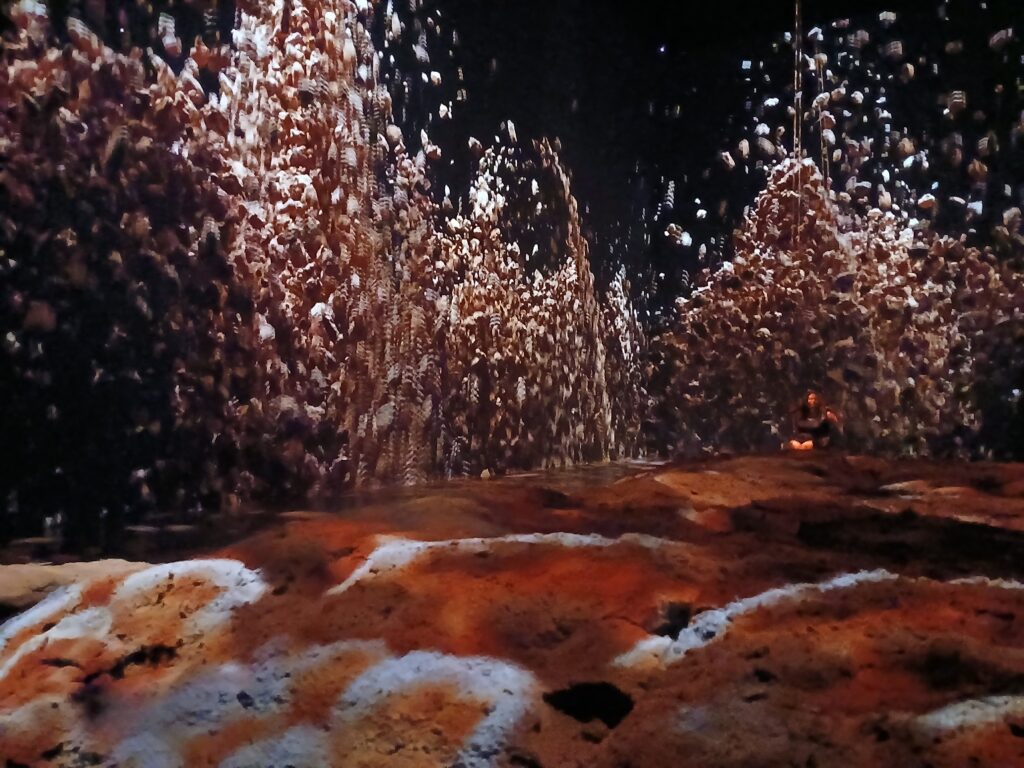
On these 40 foot walls, the exhibit uses the equivalent of 26 surround sound theaters/projectors with 16,000 laser projections.
Braille is immersed throughout the rooms, including the next room which is more traditional art.
The Line: Nachum paints 5 people’s faces – all are blind. And then the subjects add their own paint to the piece. If you have time, watch the whole video in the room, which includes interviews with each of the subjects and you watch them make their contributions to the portraits, talking about how they’re thinking through the process. The portraits are gorgeously painted – they look photographic until you look closely at them. You’ll see the Braille theme continued on the benches and chair.
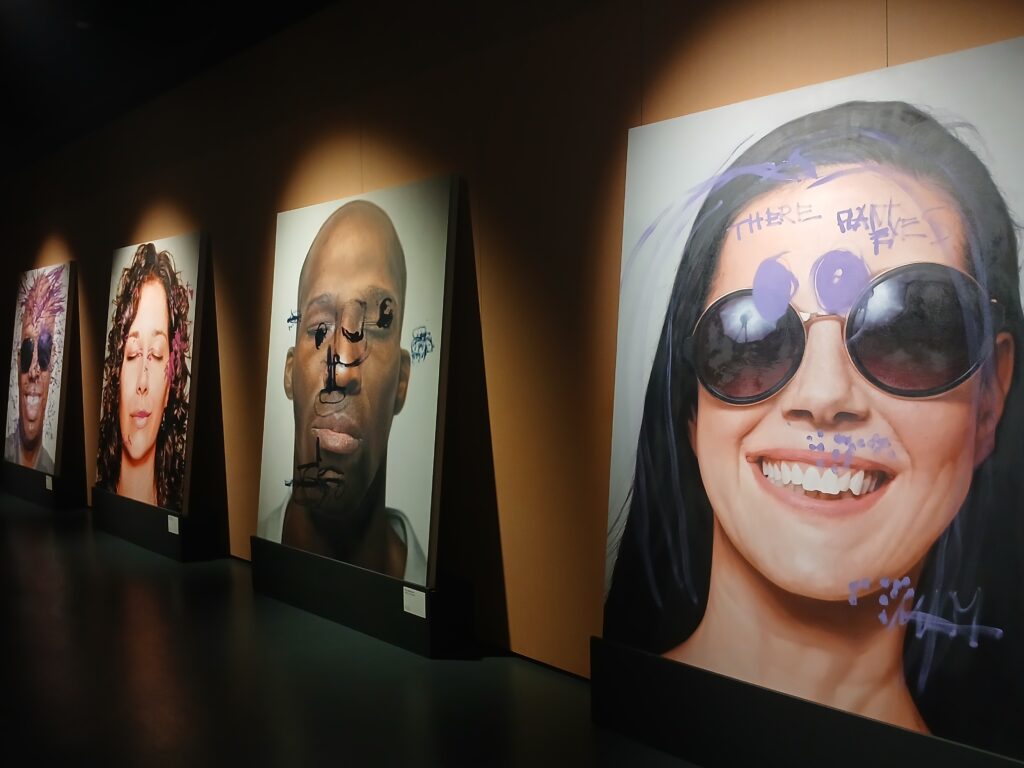
The blindness theme is meant literally for some, and figuratively for others, with the idea that some with sight have their own type of blindness. From Nachum’s website: “One recurring subject is the child with a gold crown covering his eyes, suggesting man’s blindness caused by displaced values and desire.” This motif hasn’t been fully appreciated by some in the blind community – the NYT delves into that. All entrance signs for the exhibits have Braille in addition to QR codes.

You’ll see numerous versions of the Crown Kids which Nachum says “serves as a symbol of humility and equality” and Braille is another medium to communicate through language. You might recognize the Crown Kids from an album cover he did for Rhianna in 2016.
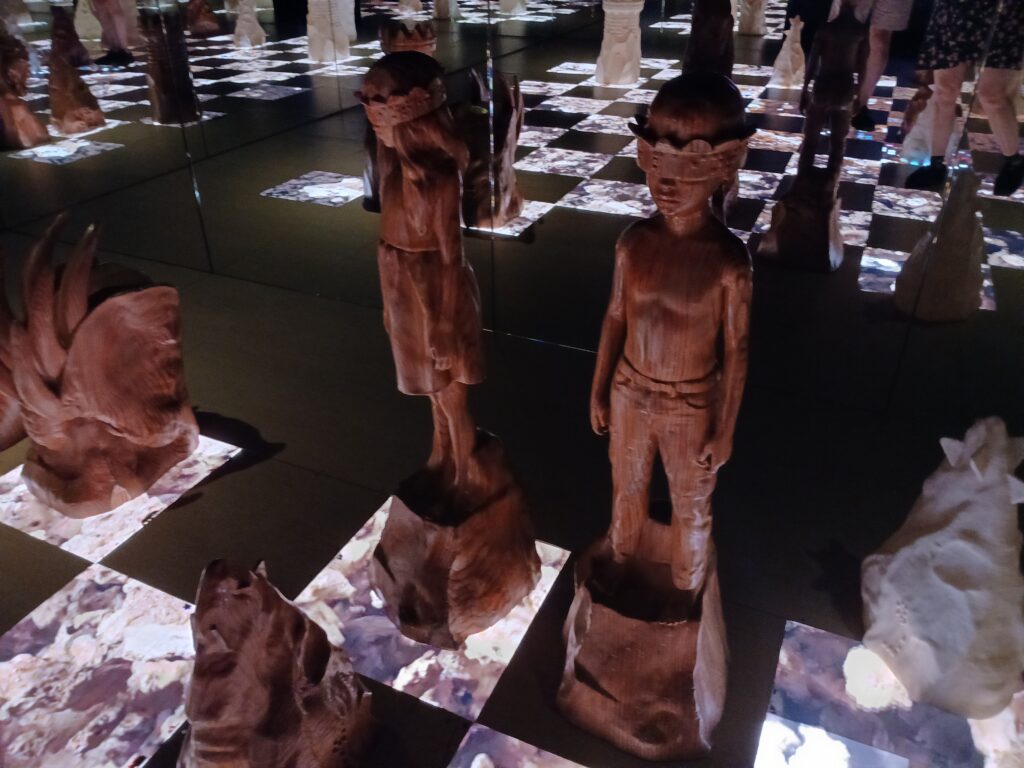
The Cave: As known as the pink room, this is the most Instagrammable and probably one of the rooms at the bottom of my favorites list. For that reason. Lots of people posing to look thoughtful and artsy. The sign says the room is for mindful contemplation, but between the posers and the abundance of fake hydrangeas, it felt too artificial for me. They also have some kind of bar/drink area in there – it was not clear what that was about. I read they’re going to (or are?) serving flower-flavored drinks. I saw people behind the bar (there was a small half-door/window with a sign) but didn’t see anyone drinking anything. Also not sure it’s a great idea to have drinks in a carpeted area where it’s kind of tight quarters and you’re supposed to be zen and sitting on the floor, but that’s just me.
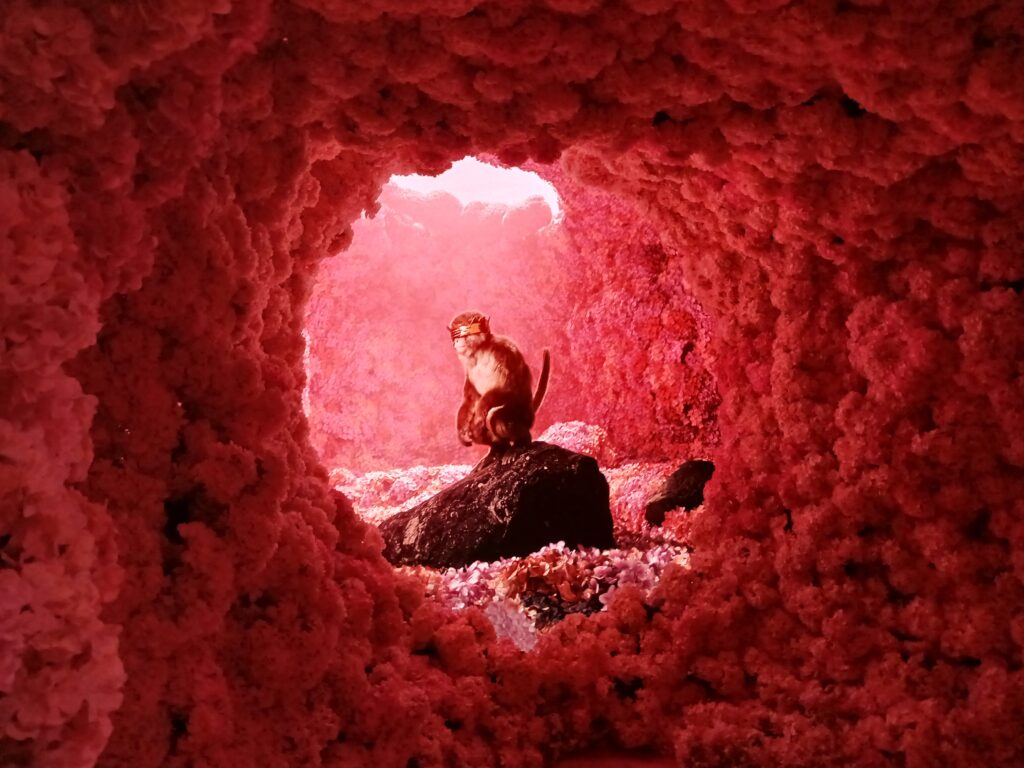
Infinity rooms: There are several rooms covered completely in mirrors. The one below is Infinite, a 14 foot high room x 40 feet. We had trepidation to walk on it initially.
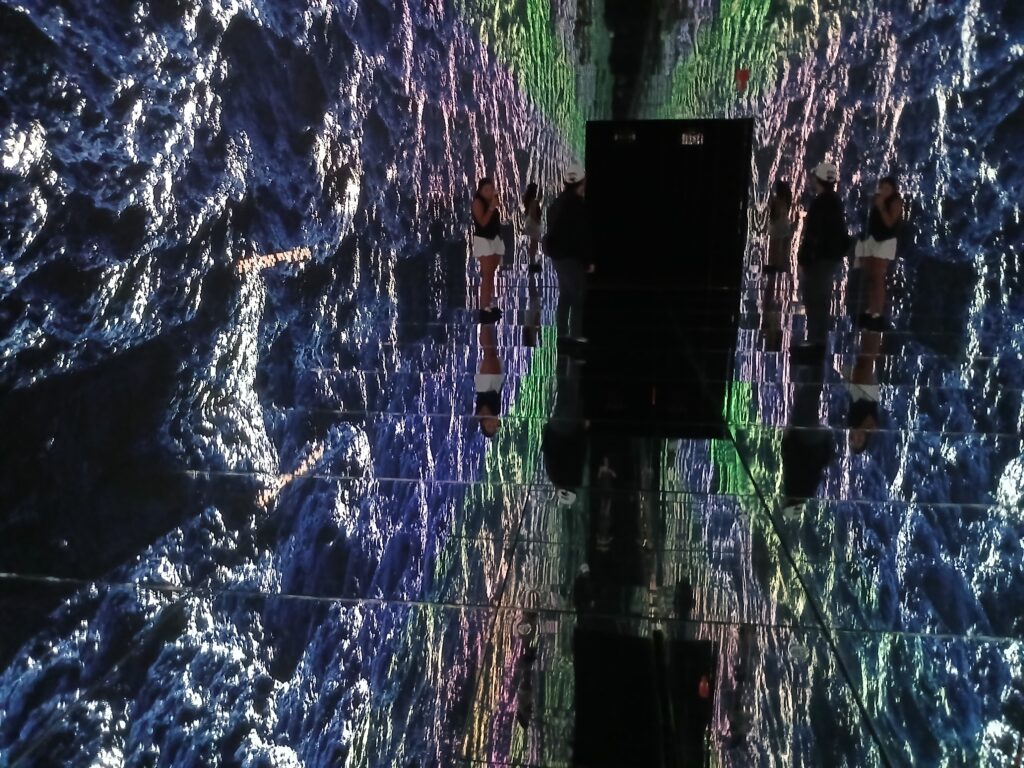
My favorite was the Dragon Room which had 500,000 LED lights. The cycle includes a galloping horse, a mastodon or similar creature, fire, and lots of geometric lighting displays. It’s beautiful. Another one of the infinity rooms (smaller) has waves projected on one large wall, reflected on the opposing wall and bouncing off the floor and ceiling.
4d Sound room: The sound room is meant to be experienced blindfolded. I know in the past they had blindfolds inside. I’m not sure if they were there – it was hard to see and we just laid down on the floor like everyone else and shut our eyes. You can feel the sound vibrating through 36 speakers under the floor.
On the last floor (all the way down in the basement) you may pass right by the bathrooms, as it’s so dark. But there’s a large unisex bathroom area before you get to the pneumatic tubes. So keep that in mind.
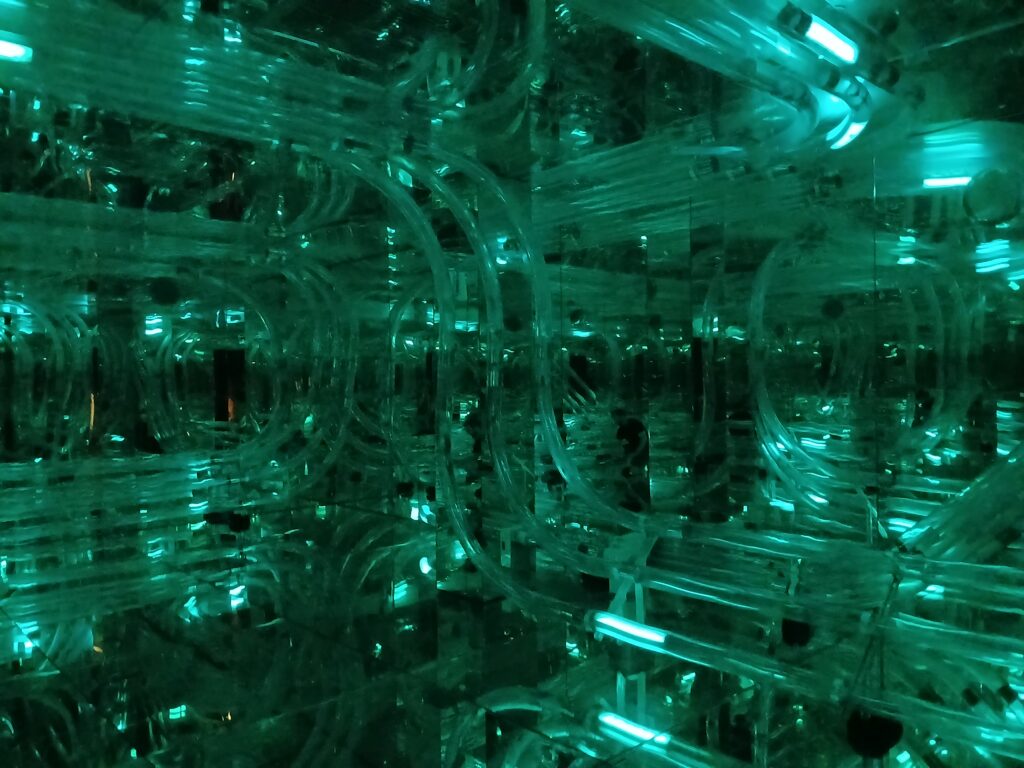
Pneumatic Transmission: This mirrored room is full of pneumatic tubes and it’s hard to see, but just before you walk in, there are stations where you can type in your wish and it will be captured as part of the exhibit. You’ll look up and see it (as light, not words) whizzing through the tubes.
Archetype: Super fun robot that makes designs in the sand. It had a rake on the end when we were there but I’ve seen videos where it has other attachments. At times the robot was kind of violent and loud, and it could be scary for young kids. The room also has sand to play with – a weird squishy sand that sticks together and slowly comes apart. I was fascinated in this room.
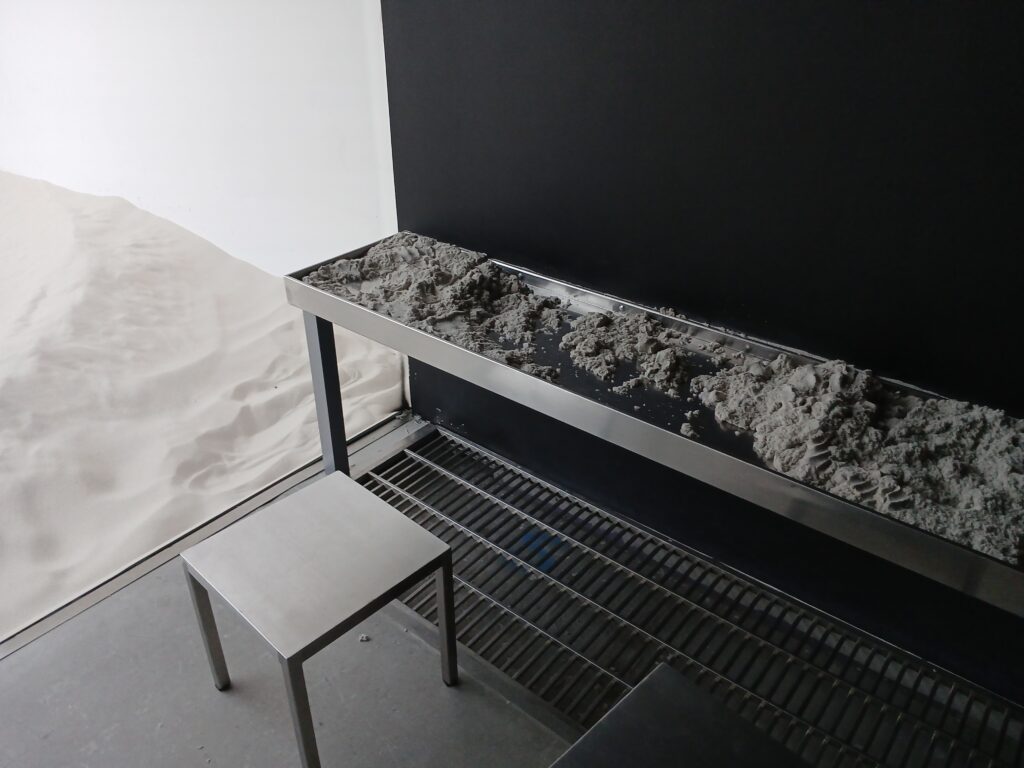
For the kids: Toward the end of the hall is a series of rooms open to each other that clearly is aimed at engaging kids. They have coloring sheets and crayons where people (not just kids) can color images from the museum and then they’ll be scanned and turned into digital characters to stay in the museum.
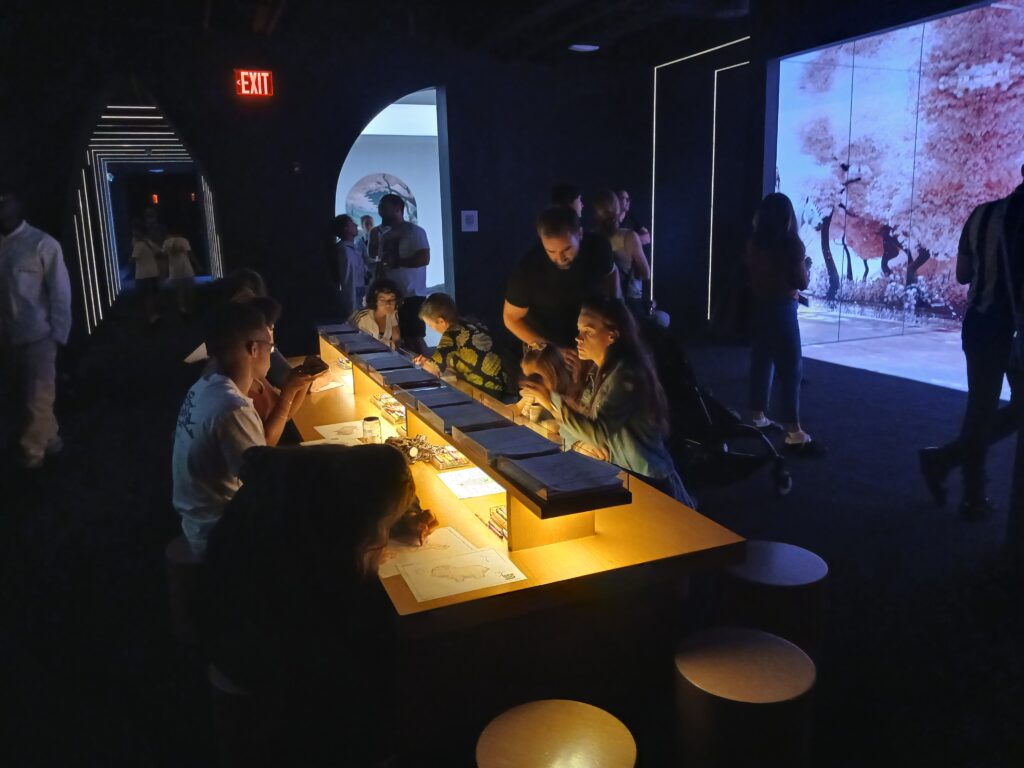
Across from this is a partly mirrored space with a digital screen with the crown kids, including the iconic pink crown girl on a horse. This scene changes over time and you can go into the mirrored area to be closer to it (or more likely, for pictures).
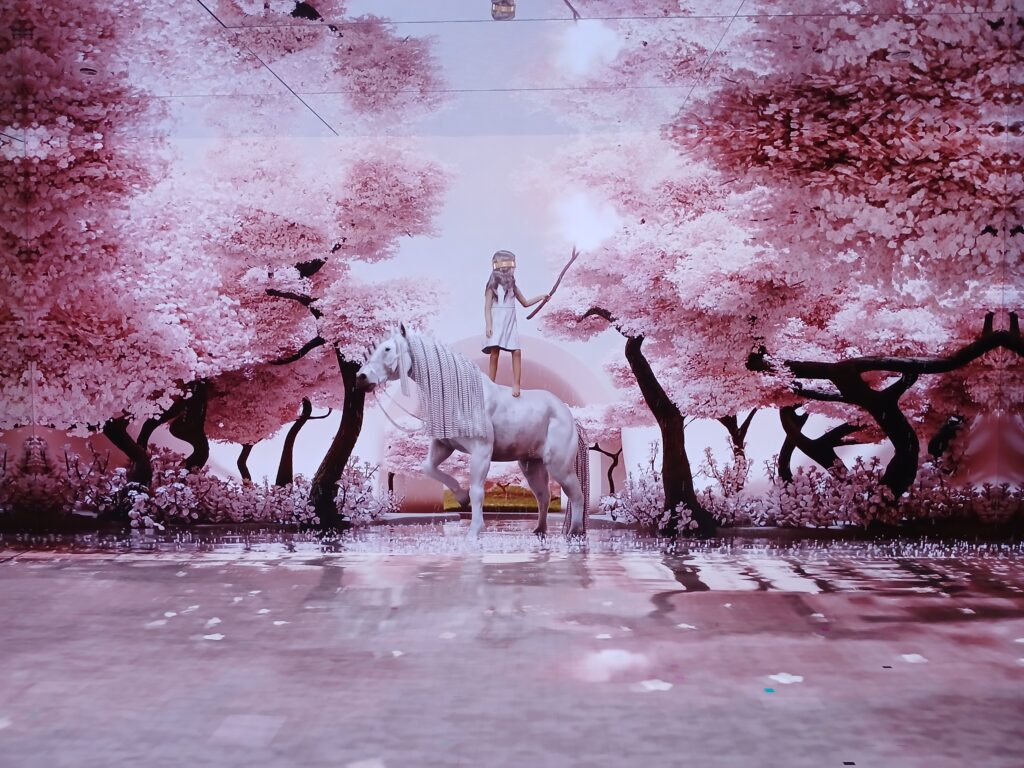
They have a few large electronic screens you can draw on with your hands (we had fun doing this), and a dark ball pit which you enter via a digital wide slide. The ball pit apparently has 25,000 balls in it. It’s not very deep or very large. There’s a room with a chess set and you can move the pieces. Stepping on the squares changes the colorations. There were not enough pieces for an actual game.
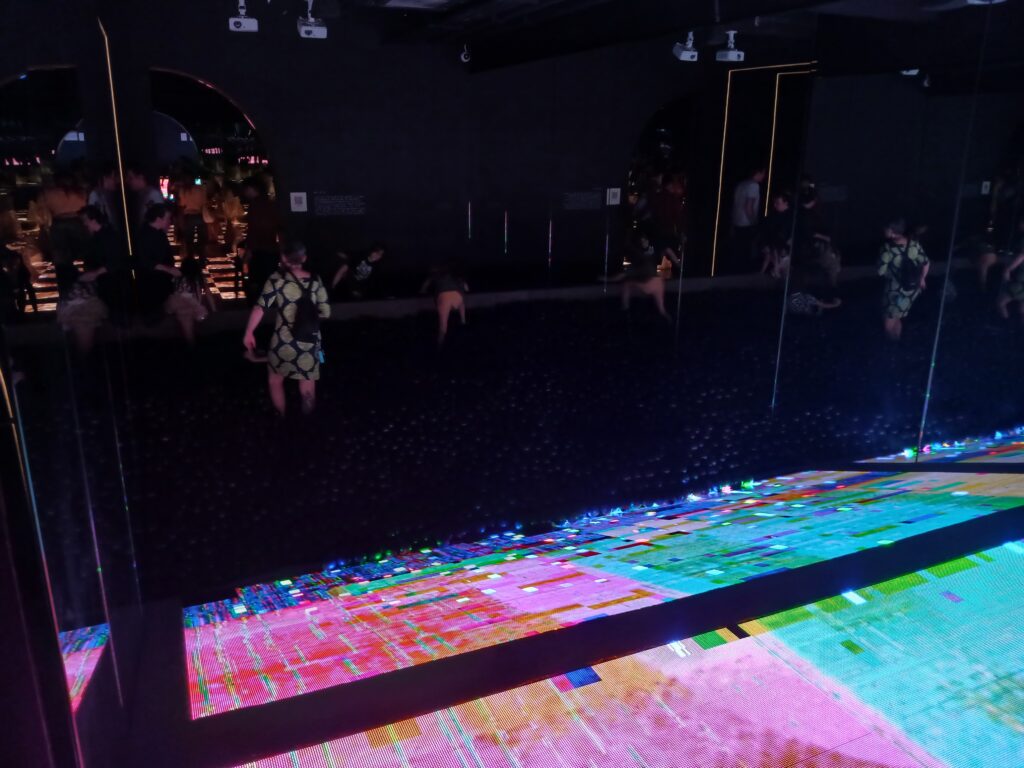
The Music Box: When you think about it, a music box drum has extruding dots that catch on the metal parts to make music. It’s like Braille, and that’s what this exhibit shows. The 2 Crown Kids operate a giant music box in a way that feels quite creepy to me.
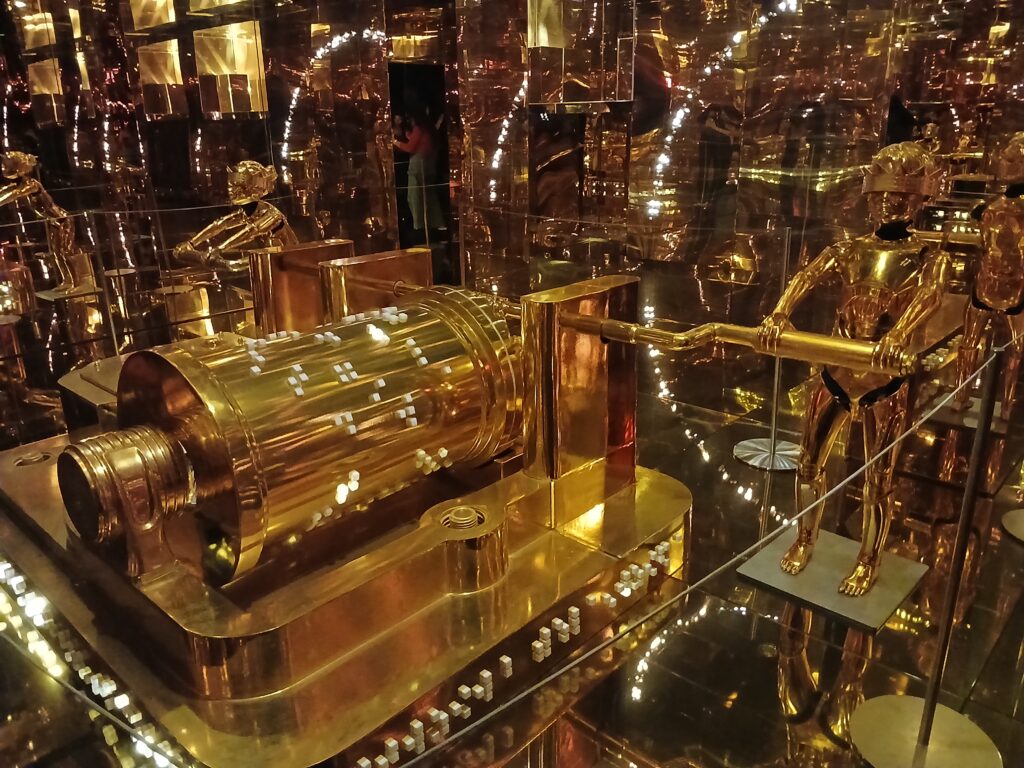
At this point you head up the stairs into the gift shop and exit. While not large, the gift shop has interesting things like dishware (which I want), mochi, some bougie board books, crown rings you’ll see Nachum wearing in the video, and some other design things. Nachum has a lot of crossover merchandise.
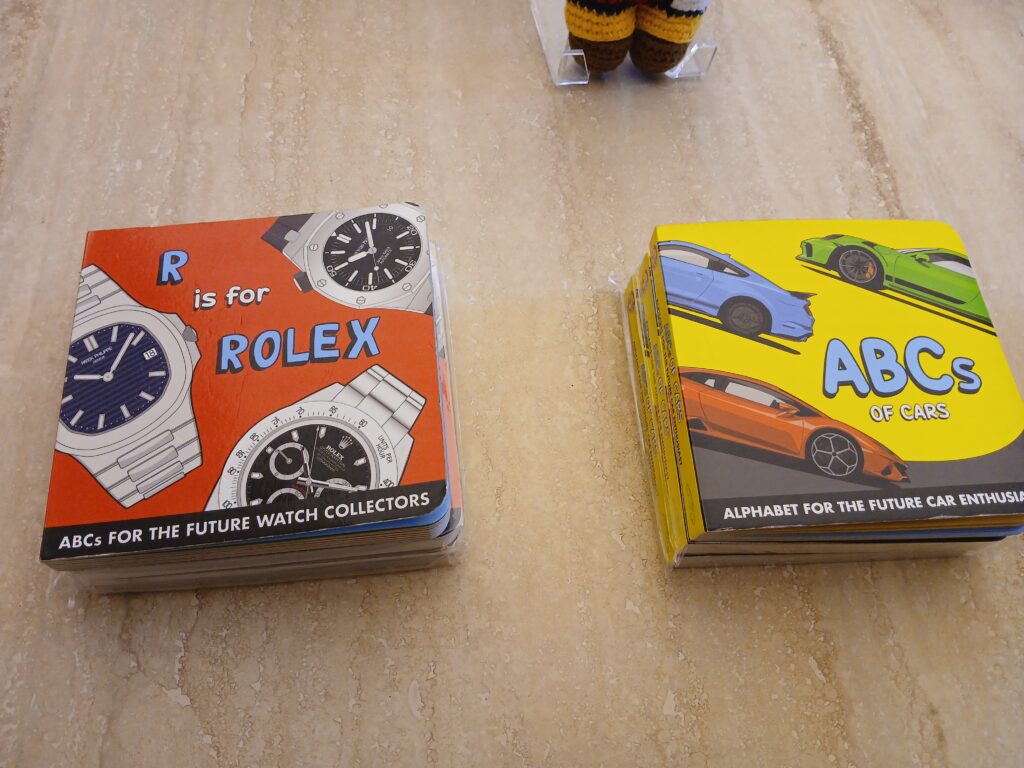
Mercer Labs with kids
I think kids would love Mercer Labs, overall. If your child (or you) has sensory issues, I would think twice. Most of it is dark, including the stairways and hallways. Some of the rooms are very loud. There are bright flashing lights in most of them. It can be sensory overload. That’s not a criticism.
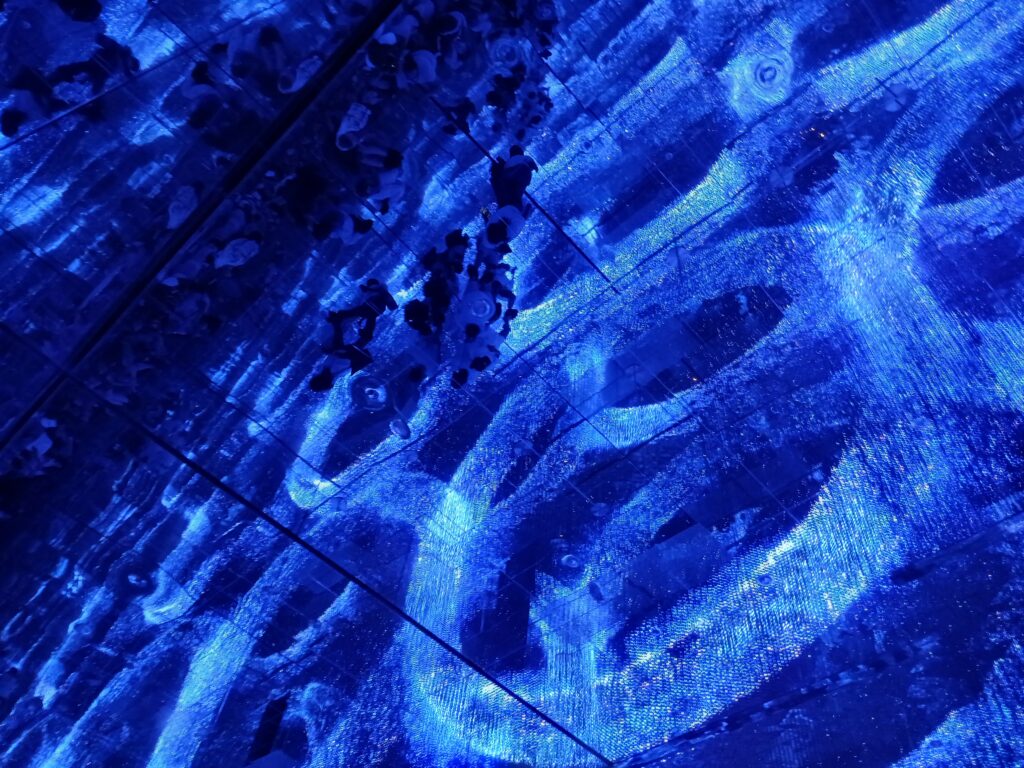
In a fair number of the rooms you can touch things, but not all of them.
The future of Mercer Labs
After this Limitless installation, we wondered if other artists would display here – because these installations for the most part are built into the environment and would not come out to be redisplayed easily elsewhere. They are partnering with other organizations for events and collaborations, including the Tribeca Festival, Dua Lipa, Alicia Keys I’m not sure what will change over the years, but it is a place I would go back to as is. Limitless is the inaugural installation.
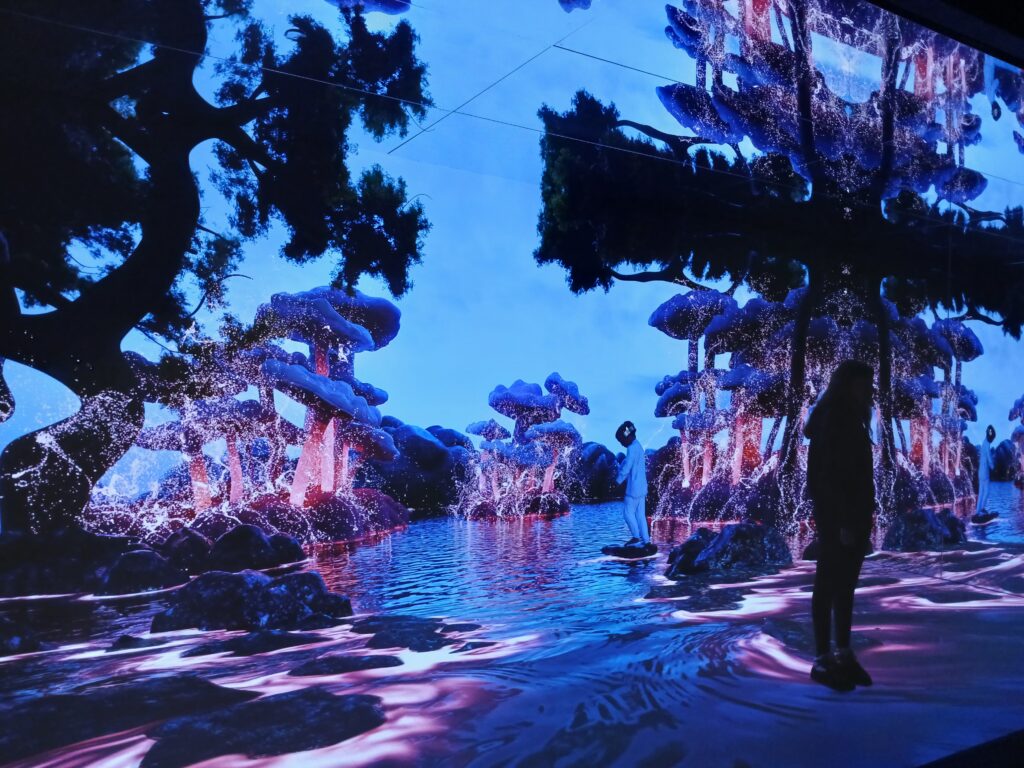
If you go to Mercer Labs with kids
Where: 21 Dey Street, Manhattan. Mercer Labs is across the street from the World Trade Center Oculus entrance. It is in a former Century 21 clothing store space.
Tickets: Tickets are currently $52/adult and $46/youth and senior.
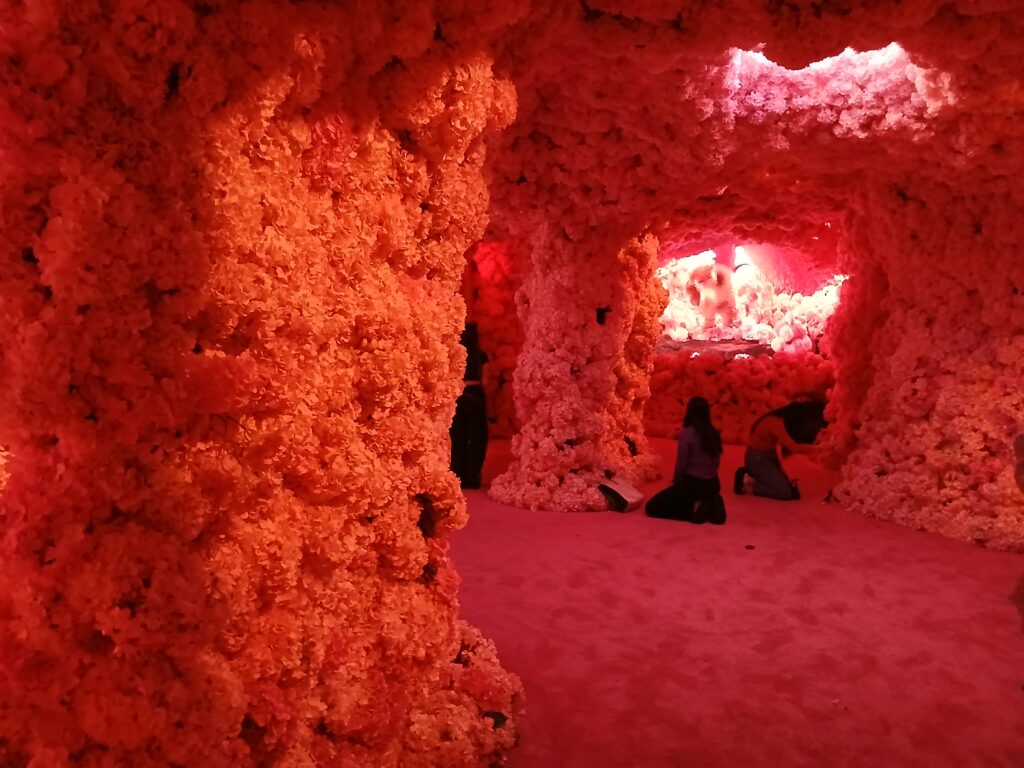
Rooms: You can get a sense of all the rooms from the Mercer Labs website. Note that at the top of the site they show a video of the Dragon Room with an engineer touching the LED lights. You are not allowed to touch them, I’m not sure why they show the engineer doing this!
How long to spend at Mercer Labs with kids: The website said to expect to spend 60-90 minutes. We spent almost 2 hours and if I were on my own, I would have stayed longer. Just to absorb what was in the rooms.
Roy Nachum’s bio: From the Mercer Labs’ site: Roy Nachum is an experimental artist known for his comprehensive artistic practice that spans across various mediums, including painting, sculpture, architecture, installation and technology. Nachum’s work often includes Braille and the recurring subject, a child with a gold crown. The Crown a symbol of diversity, humility and equality. The Braille a mode of communication and expression through language and poetry. A method to help create awareness and inclusivity, and a tribute to those with visual impairments. Its tactile quality allows for interaction otherwise not allowed in art museums. Nachum’s work by its nature demands interaction, this notion has grown to feed the movement of Mercer Labs, where technology is a tool and viewers are invited to become part of the work.
